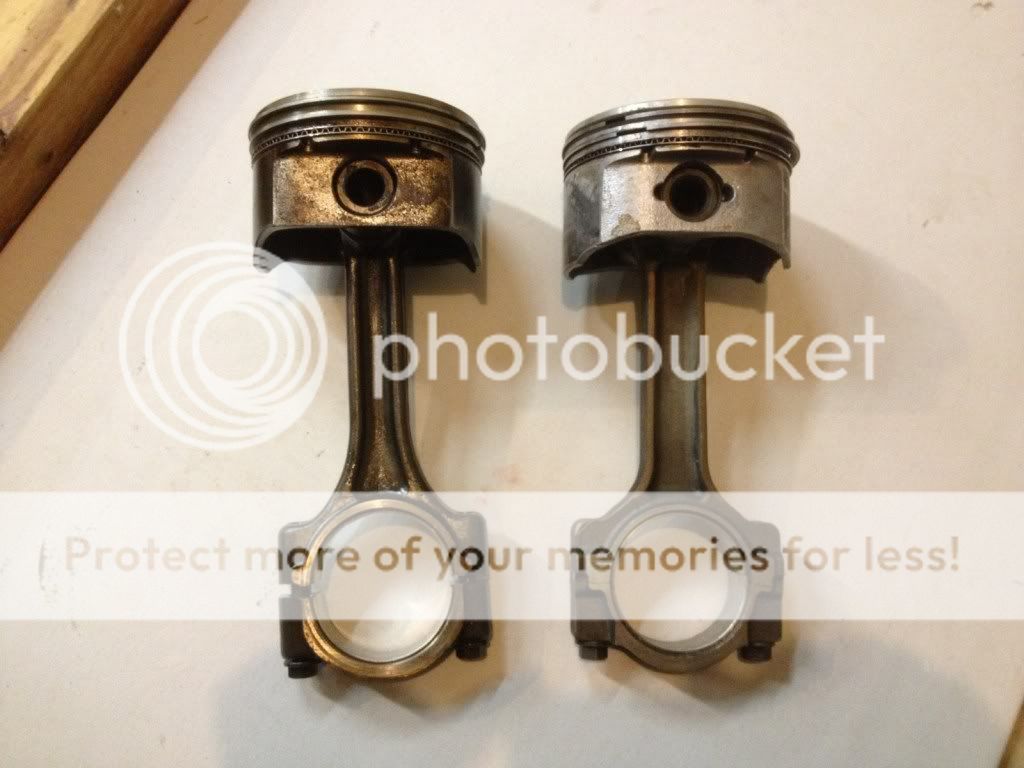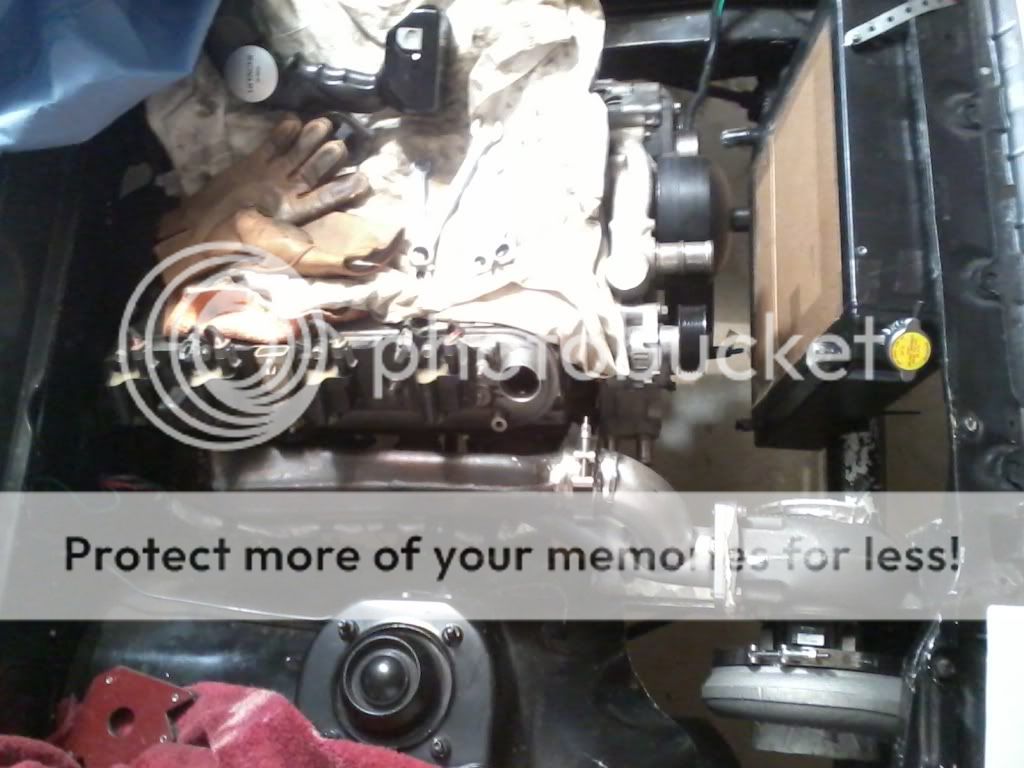Turbo 5.3 build
- Thread starter Stringbean
- Start date
Welcome!
By registering with us, you'll be able to discuss, share and private message with other members of our community.
SignUp Now!You are using an out of date browser. It may not display this or other websites correctly.
You should upgrade or use an alternative browser.
You should upgrade or use an alternative browser.
if you only lived a little closer we could grudge it out...5.3 junkyard vs my current 5.3 junkyard
Car? Mines going in a Fox Mustang when I find the right roller. Cheap head studs, custom cam, s475 turbo and probably a TH400. 700wheel with meth is my goal.
I don't want to pull this thread off topic. Good luck OP!
Posted from the TurboBuick.Com mobile app
Stringbean
Member
- Joined
- Jun 24, 2013
- Messages
- 38
To each his own on how he or she wants to build their motor. I trust the advice of James short over at shortuning and I will be putting arp fasteners throughout my motor.
Posted from the TurboBuick.Com mobile app
Posted from the TurboBuick.Com mobile app
I understand. I'm not trying to sway you, just posting the information from all the research I've been doing. Good luck with your build, I'm sure it will fly!To each his own on how he or she wants to build their motor. I trust the advice of James short over at shortuning and I will be putting arp fasteners throughout my motor.
Posted from the TurboBuick.Com mobile app
Posted from the TurboBuick.Com mobile app
better safe then sorry.
side note...my setup is in a TR but with a small 76.
I'd have the weight advantage lol. I love my little turbo6. Its my daily. Fox will be my race car.
Posted from the TurboBuick.Com mobile app
Stringbean
Member
- Joined
- Jun 24, 2013
- Messages
- 38
Made a little progress tonight got the turbo set in and got my big griffin radiator to fit. Hopefully il have my manifolds for the next day I'm off work then I can begin on the hot side.


Posted from the TurboBuick.Com mobile app
Posted from the TurboBuick.Com mobile app
FASTV6HENRY
Member
- Joined
- Feb 16, 2012
- Messages
- 280
Where is the cooling fan gonna go and are you running a intercooler? Either way I'm subscribed
Stringbean
Member
- Joined
- Jun 24, 2013
- Messages
- 38
I'm Gona put either 1 fan offset to the driver side or dual pusher fans. Chances are il b using a cx racing intercooler.
Posted from the TurboBuick.Com mobile app
Posted from the TurboBuick.Com mobile app
2QUICK2B6
Black Car Fever
- Joined
- Sep 15, 2004
- Messages
- 2,973
Spal fan ?
- Joined
- May 28, 2001
- Messages
- 16,800
" or dual pusher fans. Chances are il b using a cx racing intercooler."
I doubt you will have the space to do both an ic and dual fans, all between the core support and the header/grille area.
I doubt you will have the space to do both an ic and dual fans, all between the core support and the header/grille area.
FASTV6HENRY
Member
- Joined
- Feb 16, 2012
- Messages
- 280
If your going to do much street driving dual fans is a must. If you haven't done any pipe work yet you might want to consider adjusting the placement of the Turbo. Are you doing the pipe work yourself?
Stringbean
Member
- Joined
- Jun 24, 2013
- Messages
- 38
Yea il be doing all the piping my self. I'm considering not using a intercooler at all because e85 is now available in my area. I know il loose some hp but it will greatly simplify everything and I think il have plenty of power regardless considering I have no real goals as far as 1/4 times.
Posted from the TurboBuick.Com mobile app
Posted from the TurboBuick.Com mobile app
FASTV6HENRY
Member
- Joined
- Feb 16, 2012
- Messages
- 280
Damn brother that's half the battle is doing the pipe work. And if you can do it yourself your way ahead of the game. You wouldn't happen to live close to Orlando Fl would you.. LoL
Stringbean
Member
- Joined
- Jun 24, 2013
- Messages
- 38
There's a nice hot side for sale on here for $600.
I live in ky but I wouldn't dare do something like that for any one else I'm mediocre at best when it comes to fabricating but I'm a hard head n won't let anyone else touch my car
Posted from the TurboBuick.Com mobile app
I live in ky but I wouldn't dare do something like that for any one else I'm mediocre at best when it comes to fabricating but I'm a hard head n won't let anyone else touch my car
Posted from the TurboBuick.Com mobile app
Blkdoutbird
New Member
- Joined
- Oct 4, 2013
- Messages
- 1
Good luck on the build.All '05 and up motors recieved the better LS2 rods.Easy way to differentiate the 2 is the newer updated rods are full floating and the older rods are press fit.
Stringbean
Member
- Joined
- Jun 24, 2013
- Messages
- 38
Made a little progress today as soon as I can get some manifolds il b on my way.

Posted from the TurboBuick.Com mobile app
Posted from the TurboBuick.Com mobile app
Stringbean
Member
- Joined
- Jun 24, 2013
- Messages
- 38
After 2 weeks of non stop overtime at work I found some time to get a few things done. I got the hot side all mocked up along with some of the down pipe. I'm still thinking about wether I want the DP to exit down or out through the fender.


Posted from the TurboBuick.Com mobile app
Posted from the TurboBuick.Com mobile app
forcefed86
Member
- Joined
- Jul 28, 2005
- Messages
- 337
Man there is a ton of mis-information floating around in here!
2005+ rule does NOT only apply to the LQ4. All 2005 and up came with different hardware for the rotating assy., larger/stronger rods and floating pistons. A few 2004 model engines had these upgrades as well. The Alum L33 motors and a few escalade engines.
This is a 5.3 2005+ rod/piston on the right vs the 98-2004 rod/piston on the left.

Replacing the OEM rotating assy hardware with aftermarket hardware isn’t necessary… Massive waste of money IMO. The pistons/rods themselves will give out well before the hardware. Installing aftermarket hardware can egg the rods and cause all kinds of problems. Some get lucky….
The rod bolts are NOT the “weak point”. Don’t rev the motors over 6500rpm and the OEM hardware has been proven to 1000+crank HP range many times. I run a 2001 5.3 motor with the “weak” rods and all original hardware. The $220 motor ran 100+ low 9 second passes this year with a quite a few street miles and ended the year with an 8.93 @153 at 25.8lbs of boost. Next pass something finally gave out… can’t tell what that was at this point. I’ll bet money it wasn’t a rod bolt! My moneys on the thrust bearing. Since I launched this thing at 24lbs of boost.
I also cool my 5.3 engine very easily with a “smallish” $90 ebay fork lift radiator. I believe the core is 17x17x3.5. I use a single shrouded ford Taurus fan. Even on 100+ degree days coolant never went over 210* in traffic.

Lastly if your hotside is 2.5", you may want to reconsider. 2.5" piping will support roughly 2400 crank hp with a typical V8 turbo build. Larger piping just slows exhaust gas velocity. It will make the car spool poorly compared to what it could. 2” piping is good to 1000ish crank hp. If you don’t plan on exceeding that, I’d suggest dropping your hotside size down. I ran 2.5" and wish I would have done a little research first. Plan to re-do it this winter.
Good luck, project looks fun!
2005+ rule does NOT only apply to the LQ4. All 2005 and up came with different hardware for the rotating assy., larger/stronger rods and floating pistons. A few 2004 model engines had these upgrades as well. The Alum L33 motors and a few escalade engines.
This is a 5.3 2005+ rod/piston on the right vs the 98-2004 rod/piston on the left.

Replacing the OEM rotating assy hardware with aftermarket hardware isn’t necessary… Massive waste of money IMO. The pistons/rods themselves will give out well before the hardware. Installing aftermarket hardware can egg the rods and cause all kinds of problems. Some get lucky….
The rod bolts are NOT the “weak point”. Don’t rev the motors over 6500rpm and the OEM hardware has been proven to 1000+crank HP range many times. I run a 2001 5.3 motor with the “weak” rods and all original hardware. The $220 motor ran 100+ low 9 second passes this year with a quite a few street miles and ended the year with an 8.93 @153 at 25.8lbs of boost. Next pass something finally gave out… can’t tell what that was at this point. I’ll bet money it wasn’t a rod bolt! My moneys on the thrust bearing. Since I launched this thing at 24lbs of boost.
I also cool my 5.3 engine very easily with a “smallish” $90 ebay fork lift radiator. I believe the core is 17x17x3.5. I use a single shrouded ford Taurus fan. Even on 100+ degree days coolant never went over 210* in traffic.

Lastly if your hotside is 2.5", you may want to reconsider. 2.5" piping will support roughly 2400 crank hp with a typical V8 turbo build. Larger piping just slows exhaust gas velocity. It will make the car spool poorly compared to what it could. 2” piping is good to 1000ish crank hp. If you don’t plan on exceeding that, I’d suggest dropping your hotside size down. I ran 2.5" and wish I would have done a little research first. Plan to re-do it this winter.
Good luck, project looks fun!
Similar threads
10
2K
16
474
Online statistics
- Members online
- 18
- Guests online
- 3,093
- Total visitors
- 3,111
Totals may include hidden visitors.